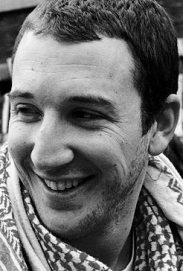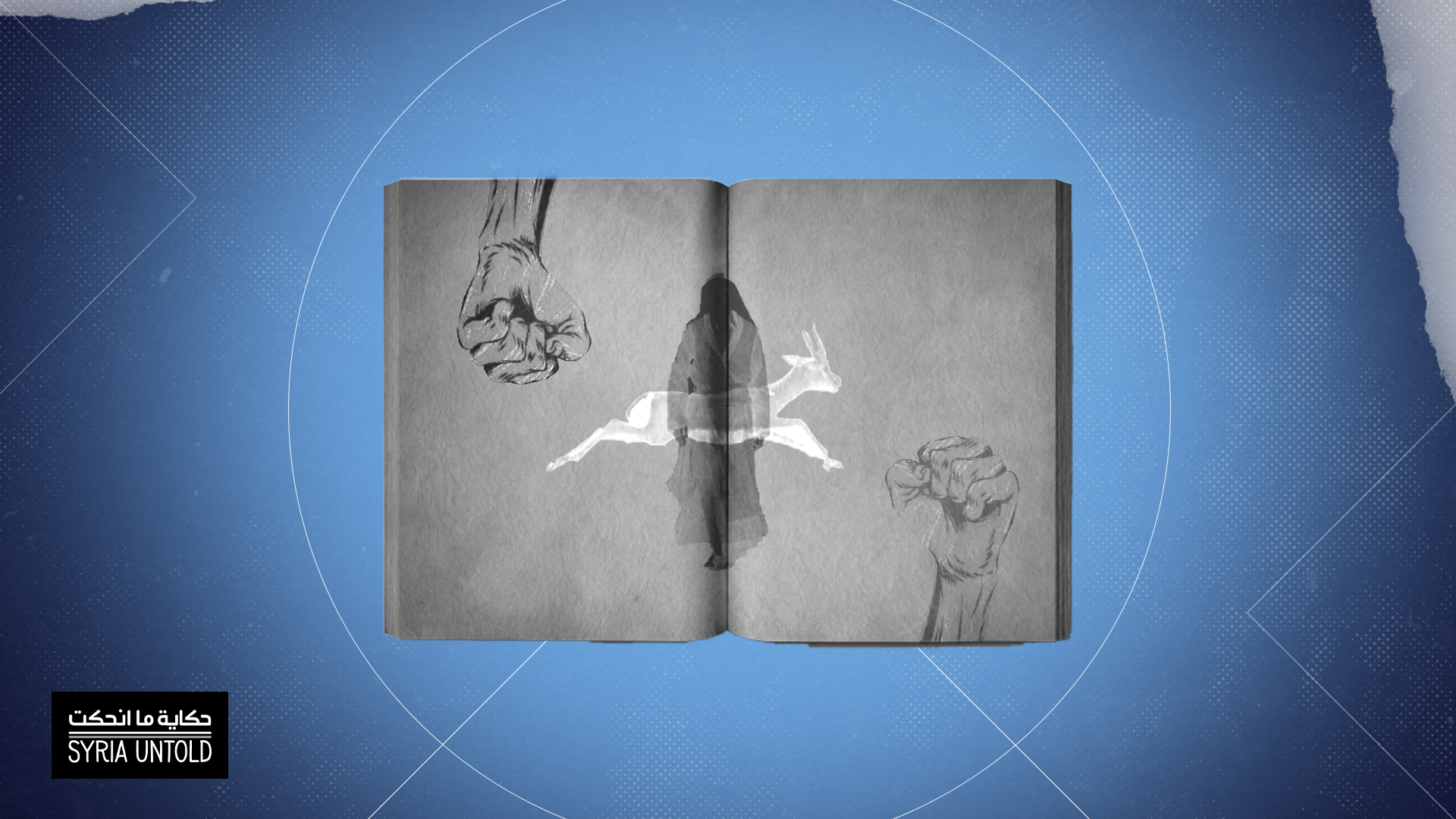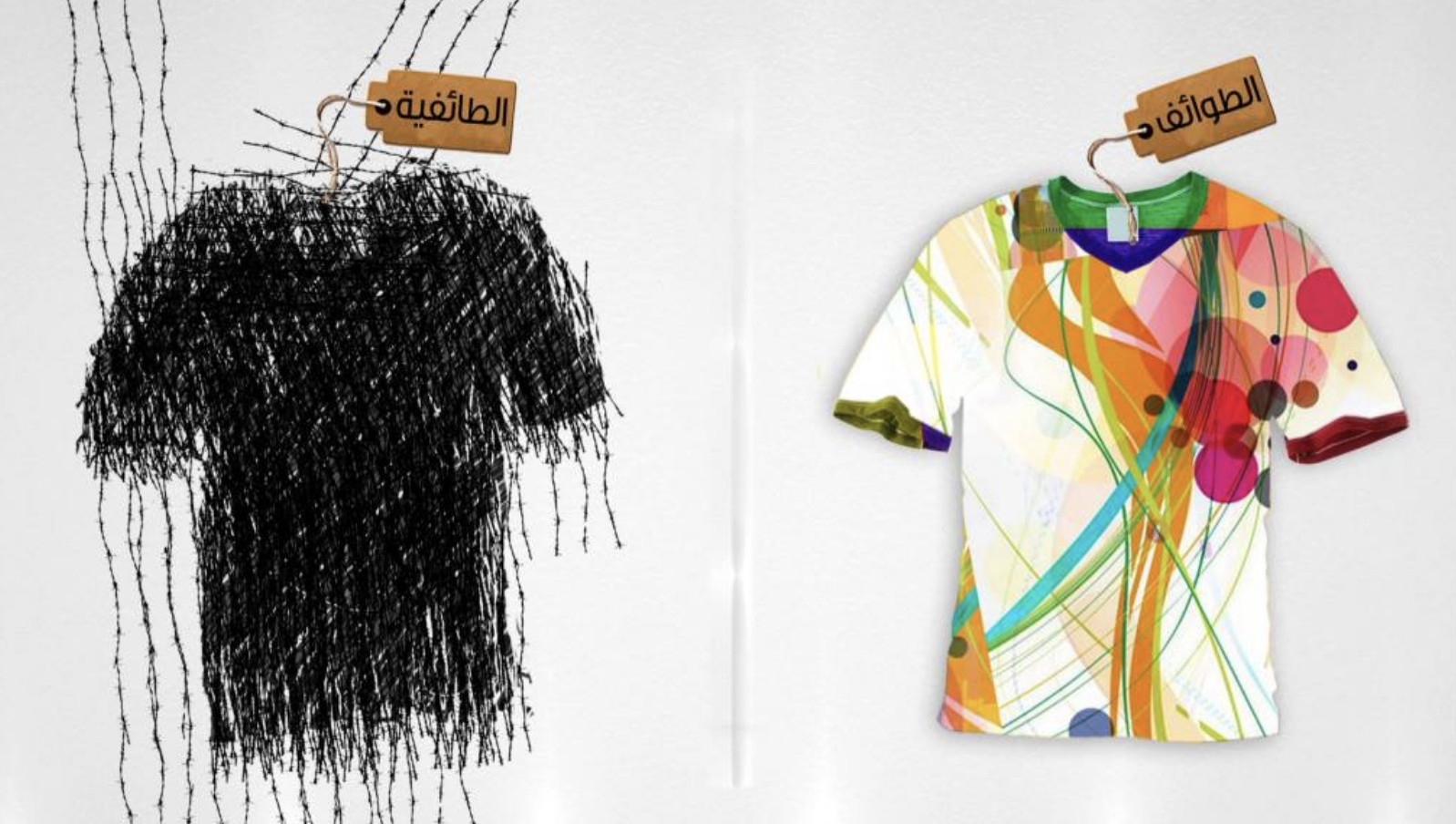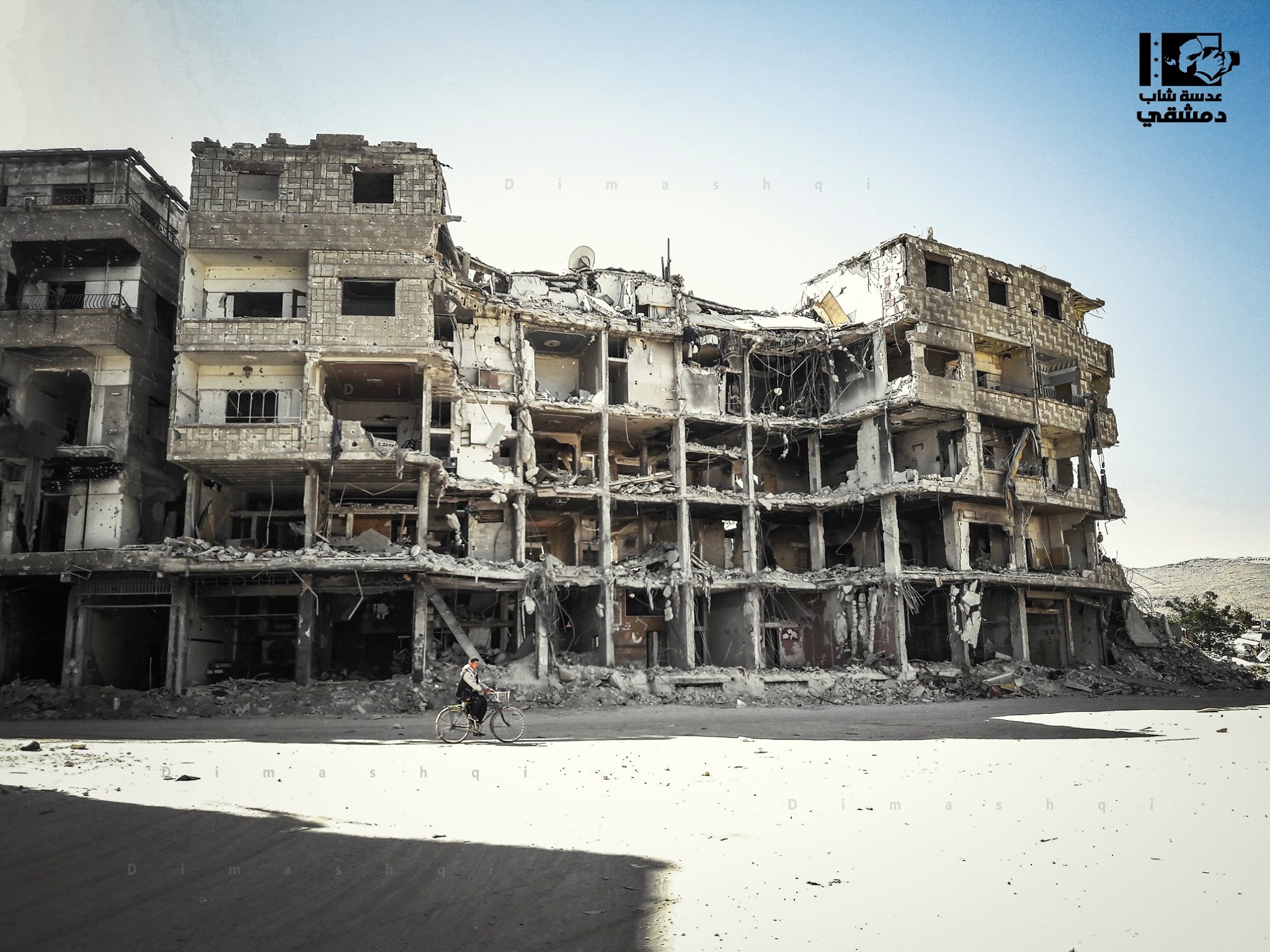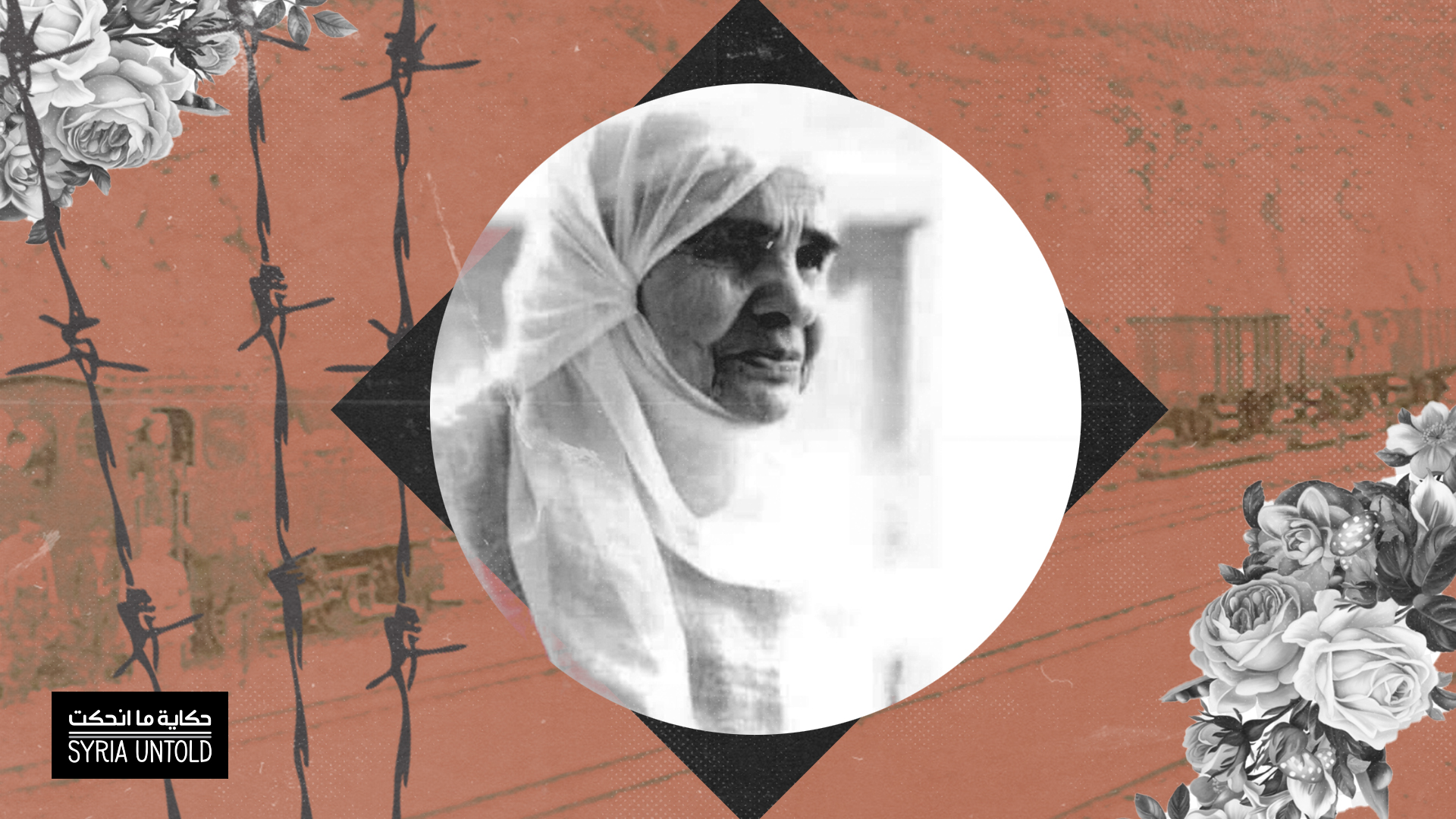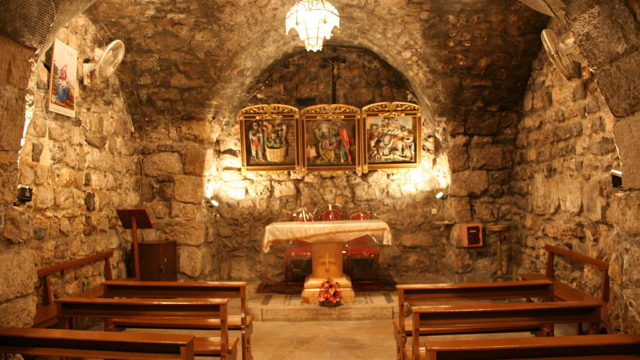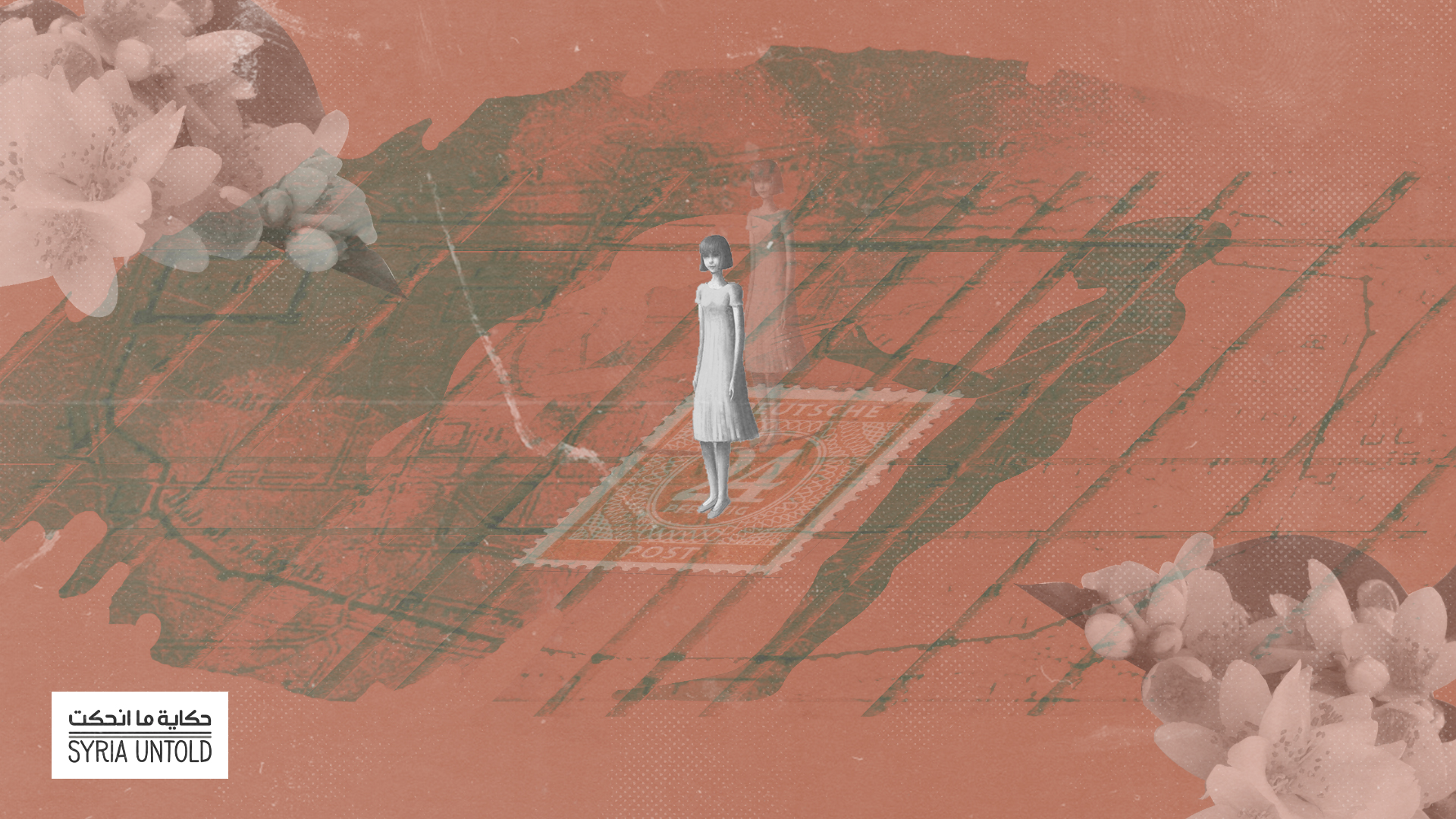This article was published in collaboration with DER, an online magazine for Arabic speakers in Norway.
“I also want to return to the issue of secularism, because some people believe that one of the requirements of secularism, or the essence of secularism, is separating religion from the state. This is wrong: there is no relationship between secularism and separation of religion from state…”
-Bashar al-Assad, December 7, 2020
This is how Syrian president Bashar al-Assad described “secularism” in a speech he gave on December 7, 2020 to senior Syrian religious authorities and Islamic scholars. They had gathered in Damascus for a meeting organized by the country’s Ministry of Religious Endowment.
During the speech, Assad also accused “modern liberalism” of having waged a decades-long war against “Islamic societies” and “Arabism.” Modern liberalism, he said, encouraged “same-sex marriage,” “gender dysphoria,” and the consumption of drugs. These last positions are shared by numerous far-right and fascistic movements throughout the world.
The speech came as a surprise for some Syrians and for Western commentators and analysts. Indeed, for several decades now, the Assad regime has often been portrayed as “secular” and “modern.” Supporters and opponents of Assad have both, at times, supported this view. But what is the reality of such “secularism”?
The Syrian regime has historically used secularism as a tool to repress opponents and to gain legitimacy among international actors, while rejecting its implementation within its own country, in effect strengthening conservatism and official religious institutions.
Syria’s Labor Communist Party, a rich political history
16 October 2020
‘The pamphlet’
10 January 2022
The Syrian regime: Secular protector of cultural and ethnic pluralism?
The Syrian regime under the Assads has long presented itself as bulwark against “extremism” both within Syrian society and internationally, especially from 2003 in an attempt to collaborate in the so-called “war on terror” led by Western states and authoritarian regimes. Damascus has similarly promoted an image of the state as a protector of minorities, be they Christian, Alawi, Shia or Druze, in a country of multiple religious and ethnic populations, emphasizing its supposed role in ensuring the peaceful coexistence of Syrian society.
At the same time, Bashar al-Assad and Syrian officials have described Syria as a secular state to foreign media. In 2010, during an interview with US television journalist Charlie Rose, Assad said that the greatest challenge facing his country is the need to “preserve Syria's secular identity from the threat of extremism.” Two years later, after the uprising had begun, Assad declared to a Russian television network that Syria was “the last stronghold of secularism and stability in the region.” He reiterated this type of discourse in the following years in various interviews with foreign media.
The diversity of Syrian society and rise of Islamic fundamentalist forces alongside the progressive militarization of the uprising do not mean, however, that the regime is a secular guarantee for social cohesion. In reality, secularism has mostly been the topic of foreign-facing discourse by Assad and Syrian officials. But within the country, regime officials have always insisted instead that they are “faithful Muslims” promoting the “correct understanding of Islam,” in opposition to the “fanaticism” of other groups.
This was already the case under Hafez Al-Assad’s rule. In 1979, one week after the so-called “Fighting Vanguards of the Muslim Brotherhood” massacred Alawite cadets at the Aleppo Artillery School, the elder Assad gave a speech emphasizing the importance of “the essence of Islam” in social progress. He also described the Islamic religion as espousing “love, work and ethics” and presented himself as a “faithful Muslim” encouraging “everyone to have faith and to fight rigidity and fanaticism.”
Throughout his 30 years of rule, Hafez al-Assad continued promoting an image of himself as a pious Muslim and reintroduced previously abolished religious formulas into public ceremonies. Moreover, the regime sponsored and institutionalized alternative Islamic groups that were willing to play along with its political game, such as the Naqshbandi Kuftariya Sufi order under Sheikh Ahmad Kuftaro and groups affiliated with Sheikh Said al-Buti or the Qubaysiyat women’s Islamic movement. A surge in mosque construction occurred under Hafez al-Assad’s rule, while al-Assad Institutes for the Memorization of the Quran were established across Syria. This was linked to Assad’s policies of progressive economic liberalization, especially from the mid-1980s onward, as he sought collaboration with certain sections of the bourgeoisie, particularly in Damascus, as well as Sunni religious leaders in order to consolidate his power and break with the more radical Baathist policies of the 1960s.
Following Bashar al-Assad’s ascent to power in 2000, he pursued a path similar to his father's, using Islamic symbolism in an attempt to build up legitimacy and popularity among conservative Sunni Muslims. The aim was to mobilize the support of large sectors of Syrian society against a hostile international political scene and threats against Damascus after the U.S.- and U.K.-led military invasion of Iraq in 2003. Syria also faced political isolation following the 2005 assassination of former Lebanese prime minister Rafic Hariri, in which it was accused of involvement.
As explained by researcher Lina Khatib, Assad promoted the idea of “takrees al-akhlak wa nashr thaqafat al-tasamuh, wa isal al risala al-haqiqiya lil-islam” (“diffusing morality, spreading the culture of tolerance and communicating the true message of Islam”) in many of his speeches, interviews and conference presentations. He increasingly presented himself and the Syrian regime as patrons of “moderate Islam” against “Islamic extremism.” He also projected the image of a leader faithful to Islam and a guardian of the Islamic religion in Syria. State media commonly reported Assad’s participation in holiday prayers in mosques across the country, while images abounded portraying him as a pious Muslim. Meanwhile, the regime followed a continued policy of détente, started by Hafez al-Assad at the beginning of the 1990s, toward opposition Islamic fundamentalist groups through the release of political prisoners, and the tolerance of Islamic publications and movements so long as they refrained from political involvement.
Neoliberal policies only accelerated and deepened during the younger Assad’s rule through the adoption of the “social market economy” as a new economic strategy. In other words, the private sector would become a partner and leader in the process of economic development and in providing employment instead of the state. The aim was to encourage private accumulation principally through the marketization of the economy while the state withdrew in key areas of social welfare provision.
Popular Oral Culture and Sectarianism, a Materialist Analysis
31 October 2018
These neoliberal policies strengthened religious associations in Syria, both Islamic and Christian, as well as their networks for service and humanitarian assistance, increasing their role in society at the expense of the state. In 2009, out of 1,485 associations, 60 percent were charities, the vast majority of which were religious. On the eve of the uprising, the Qubaysiyat, for example, owned around 200 schools, according to an article published on a pro-opposition news site by religious personality and former MP Muhammad Habash. The support for the Qubaysiyat reached a peak when one of their members was appointed as an official religious advisor of the Minister of Religious Endowment in early 2008, after the government established an “Office of Women’s Religious Instruction.”
The Syrian regime under the Assads has alternated policies of confrontation and harsh repression alongside collaboration with various Islamic movements. For instance, in the late 2000s, the regime repressed some Islamic groups and tried to limit their autonomy and influence, which had attained increasing importance in the preceding years.
There was, however, a general policy and rapprochement with religious conservative layers of society, coinciding with censorship of literary and artistic works and promotion of religious literature that filled the shelves of libraries. The effect was an Islamization in the field of higher education. At the same time, feminist activists and groups were publicly accused by religious conservative movements close to the regime of heresy and of seeking to destroy society’s morality. Such movements accused activists of propagating Western values, such as the notion of civil marriage, LGBTIQ rights and sexual freedom. For example, on April 11, 2005, the pro-regime Sheikh al-Buti waged a virulent attack on women’s rights and feminist activists, describing them in a public speech as “dirty agents,” “traitors,” “dwarfs” and “slaves whose masters seek to eradicate the Islamic civilization from its roots.” In 2010, several Islamic clerics, such as Sheikh Osama Rifai, who is now in exile for his opposition to the regime and serves as head of the Turkish-backed Syrian Islamic Council, and Sheikh Ratib al-Nabulsi, who has not taken a stance against the regime, portrayed the UN’s Committee on the Elimination of Discrimination against Women (CEDAW) “as a grave threat to the lives, morals, and religious values of Syrians.” These same men supported several of the Syrian regime’s arguments against key provisions of CEDAW. For example, they opposed Article 2 of the covenant, which mandates notably the states enshrine the principle of equality between men and women in their national constitutions and other appropriate legislation. In 2012, in one of its periodic reports to CEDAW, the Syrian government said it faced difficulties in amending the personal status law, arguing that while “international conventions supersede national laws, they do not supersede divine law.”
With the outbreak of the uprising in 2011, the use of Islamic ideology remained a key element in the regime’s propaganda, which portrayed the Syrian state as promoting “moderate” and “correct” Islam in opposition to more “extremist” and “fanatic” practices. In September 2011, Assad argued in a speech that the underlying causes for the “events” in Syria were based on religious beliefs. He referred to the situation as a “crisis of morality” (“azmat ‘akhlaq”). In his December 7th, 2020 speech, Bashar al-Assad repeated that the violence was the result of a misunderstanding of religious beliefs. At the same time, he accused the first demonstrators in 2011, who streamed out of mosques after prayer time chanting the common protest chant “God is great!” of being atheists, in an attempt to discredit them.
Conservatism as a tool for control
“But religion is the law that controls society…The law controls relationships between people in the institutional sense, while religion controls them in the subjective and ideological sense.”
-Bashar al-Assad, December 7, 2020
This sentiment is indeed reflected in the Syrian constitution and in legislation, which is filled with various religious dimensions. Certain rights and duties have long been assigned according to one’s religious identity and ethnicity, with the result being that there is no equality between sects and ethnic groups. The same remains true after years of war.
The 2012 constitution, for example, stipulates that the president must be a Muslim man and that “the main source of law is the Sharia,” a clause that is discriminatory toward other religious sects and toward women. The constitution includes no provisions to abolish discrimination or violence against women and does not secure equality for women as full citizens of the state, while it confirms the power of religious authorities to preside over the lives of Syrians through the following clause: “Personal status is protected by and subject to each religious sect.” This clause divides citizens into sectarian communities and subjects them to different religious, sectarian and legal systems.
Damascus’ forgotten ‘Saturday of blood’
07 September 2021
The forgotten railways of Syria and Lebanon: Tales of a missed connection
29 October 2021
Syria has eight different sets of personal status laws, each of which is applied according to the religious sect of an individual. Christian and Druze communities follow their own laws, while the personal status laws for the remaining Muslim population in Syria are based on a particular Sunni interpretation of Islamic sharia, Hanafi jurisprudence and other Islamic sources. These laws also include major discriminatory measures against women. More generally, Syrian personal status laws are, as Syrian lawyer Daad Mousa argues, “based on the principle that the man is the head of the family, which undermines women’s rights as human beings.” For example, Article 548 of the Criminal Code withholds full penalties for so-called “honor crimes.” Another example is the so-called “legalized rape” enshrined in Article 489, which allows a husband to sexually assault his wife. [i] Marriage is also a religious, rather a civil, institution under the law and therefore imposes a number of restrictions. Syrian mothers are not entitled to grant nationality to their children.
In a similar vein, the Arab ethnic identity is the supreme one recognized in Syrian law, according to the constitution, while others are tolerated as subordinate or nearly forbidden, such as the Kurdish identity. Kurdish populations in Syria have suffered discriminatory and repressive policies on the political, social and cultural levels since the independence of Syria in 1946. In his December 2020 speech, Bashar al-Assad reiterated this position, explaining that Islam and Arabness are at the foundations of Syria’s national identity.
This position is in contradiction with the concept of a secular state. At a minimum, the concept of secularism encompasses the separation of the state and religion as well as neutrality towards different religious beliefs and ethnicities, including in the distribution of resources or opportunities. Religion and religious institutions do not impose their laws on society, and no religious creed is privileged over any other. At the same time, freedom of conscience guarantees the right of believers to practice their religions and of non-believers to not believe or practice any religious dogma.
This system of laws and this political framework, which are regulated along religious, ethnic, and patriarchal lines, are critical to the maintenance of divisions within society. Thus, despite the regime’s supposed “modern” appeal, it in fact has an interest in maintaining such laws as an instrument of division and domination.
Since Hafez al-Assad’s ascent to power in 1970, the Syrian regime has used policies that instrumentalize religious sectarianism and ethnic identity to divide Syrians, while developing a double policy of repressing independent popular civic and secular organizations and political parties. The regime only allowed alternative organizations to develop under its own control, while reinforcing sectarian and primary—including tribal—identities. Moreover, there is a long history of relations between the Assad regime and Islamic fundamentalists groups both in Syria and abroad, as well as instrumentalization of jihadist groups—including during the U.S.-led occupation of Iraq.
Strengthening religious institutions
“The religious establishment was the auxiliary of the army…If the army had failed, terrorism would have triumphed, and if the religious establishment had failed, sedition would have triumphed.”
-Bashar al-Assad, December 7, 2020
In his speech, Assad praised the role of the Ministry of Religious Endowment over the course of the war, saying that it had purified the “liberated” Syrian cities from backwardness, fanaticism and blasphemy by promoting the “correct” Islamic message.
The government has long used these religious power networks—the Minister of Religious Endowment and other pro-regime Islamic religious associations, as well as clerics from other Islamic and Christian denominations—as tools to control society. Symbolic of the importance of this network, clerics of different religions participated in the rallies and public demonstrations to support Assad’s "re-election" in May 2021. The Ministry of Religious Endowment played a leading role in mobilizing Sunni clerics for these rallies. It asked mosque preachers to encourage participation in the election as "one of the complements of faith" and organized public meetings for Sunni clerics and their members in several cities across the country, including Damascus, Homs, Hama and Aleppo.
Sultana’s story
10 July 2021
From Ottoman Syria to Argentina
02 August 2021
The regime has also used Sunni clerics as part of the so-called reconciliation agreements with opposition armed groups while expanding loyalist local religious networks in the areas it has recaptured. One of these pro-regime religious networks, al-Fariq al-Dini al-Shababi (the Youth Religious Team) is helmed by Abdullah Sayyed, the son of the Minister of Religious Endowment. The ministry established the group as a volunteer organization in 2016 to mobilize young religious scholars in the fight against "extremism" and to promote a "moderate" religious discourse. Since then the Youth Religious Team has organized training sessions and conferences throughout the country while enjoying extensive access (including its own weekly program) to the ministry's Nour al-Sham television channel. Members enjoy political and security privileges, including appointments and permission for religious activities. This strategy allows the regime to build a new generation of loyal clerics.
The role of the Ministry of Religious Endowment, and especially its minister since 2007, the Mufti of Tartous Muhammad Abdul Sattar Sayyed, was further strengthened in September 2018 through Decree No. 16. The decree revised and expanded the ministry’s responsibilities and internal structures to reward religious groups that provided support to the regime during the uprising. It also expanded the ministry's powers at various levels, turning it into a tool to prevent uncontrolled religious mobilization. First, Decree No. 16 allows the Ministry of Religious Endowment to establish its own commercial establishments, the income from which may flow directly to its treasury without going through the Central Bank or the Ministry of Finance, thus giving it complete financial independence. The Ministry of Religious Endowment can now outsource its property, set up tourism projects such as restaurants, hotels and cafes, and lease its land to investors. Decree No. 16 also granted a full tax exemption for workers in the ministry's religious domain and endowment properties. Even before the decree was passed in 2018, the Ministry of Religious Endowment was the richest institution in Syria due to a steady flow of charity funds and its large tracts of property that had been registered as religious endowments since the Ottoman era.
Decree No. 16 also allowed the ministry to manage financial and educational institutions, in addition to regulating artistic and cultural production and authorizing a group called the Religious Youth to train and supervise preachers, oppose measures contrary to certain morals and collect zakat taxes. It established pre-university Sharia schools and religious councils in mosques, independent of the ministries of education and higher education. All this led to the strengthening of the role of the Ministry of Religious Endowment at the expense of the Grand Mufti (formerly officially considered the country’s highest Sunni Muslim religious authority) in a struggle for influence and material advantage between the two Sunni religious institutions. The decree authorized the Minister of Religious Endowment to appoint the Grand Mufti, a right previously vested in the presidency, and limits his term to three years, renewable only with the minister's approval, while removing the mufti's right to chair the Supreme Awqaf Council. That post was handed instead to the Minister of Endowment. Decree No. 16 drew significant opposition from both loyalist and democratic opposition circles, denouncing a deepening of the Islamization process of Syrian society. The decree was subject to numerous amendments by deputies that limited some of the ministry's powers (including tax exemption for religious affairs workers or the possibility of recruiting foreigners as civil servants in the ministry) but confirmed the expansion of the ministry's reach in society.
Finally, in November 2021, the position of Grand Mufti was abolished altogether by a presidential decree and his responsibilities were handed over to the Islamic Council of Jurisprudence Scholars, an institution affiliated with the Ministry of Religious Endowment. The move confirmed the ministry’s domination on the religious institutional level.
This trend of further Islamization of society can be seen in other networks affiliated with the state, while the Baath Party and its cadres have increasingly used religious discourse in their activities. For instance, the National Union of Syrian Students, a historically Baathist-connected institution, now sponsors religious workshops.
On Memorizing the Fatiha
14 September 2018
The body, between event and memory
25 January 2021
No secularism without democracy and equality for all
The establishment of the modern Syrian patrimonial state occurred under the leadership of Hafez al-Assad following his arrival to power in 1970 and was considerably strengthened by Bashar al-Assad since 2000. The Assads have above all else imposed the state’s domination over society through brutal repression and other tools such as corporatism, sectarianism, racism, corruption, nepotism and others, managed on informal networks of power and patronage. These tools allowed the regime to integrate, boost or undermine groups belonging to various ethnicities and religious sects. At the local level, various actors collaborated with the regime, including state or Baath officials, intelligence officers, clerics, tribal leaders, businessmen and others, who managed specific localities.
In this sense, the regime lacked any real ideological hegemony, instead adapting its discourses and practices according to the context and actors. Both Assads often resorted to religious eclecticism in an attempt to appeal to as many symbols and groups as possible. Evidence of this lack of hegemony lies in the Syrian regime’s gradual adoption and promotion of conservative religious discourse, alongside the adoption of economic neoliberal policies that stand in contradiction with the original Baathist discourse regarding “socialism” and “secularism.”
The Assad regime is far from a secular defender of pluralism in Syrian society. Moreover, any secular project in Syria or elsewhere should not be separated from the broader collective struggle for democracy, social justice and equality. Secularism cannot exist without democracy and vice versa. Secularism should not differentiate between different sects and ethnicities, between believers and non-believers, women and men. From this perspective, promoting a secular state is key to challenging sectarianism, racism, sexism and homophobia.
Secularism is a first step towards challenging these various forms of discrimination and is therefore a major part of demanding democracy. The struggle for secularism, alongside the other components mentioned above, is a struggle against the dominant ideas of authoritarian regimes and religious fundamentalist movements.
Note
[i] The text of Article 489 is as follows: “Anyone who uses violence or threat to force a person other than his spouse to engage in sexual intercourse shall be punished with a minimum of five years of hard labor.”


